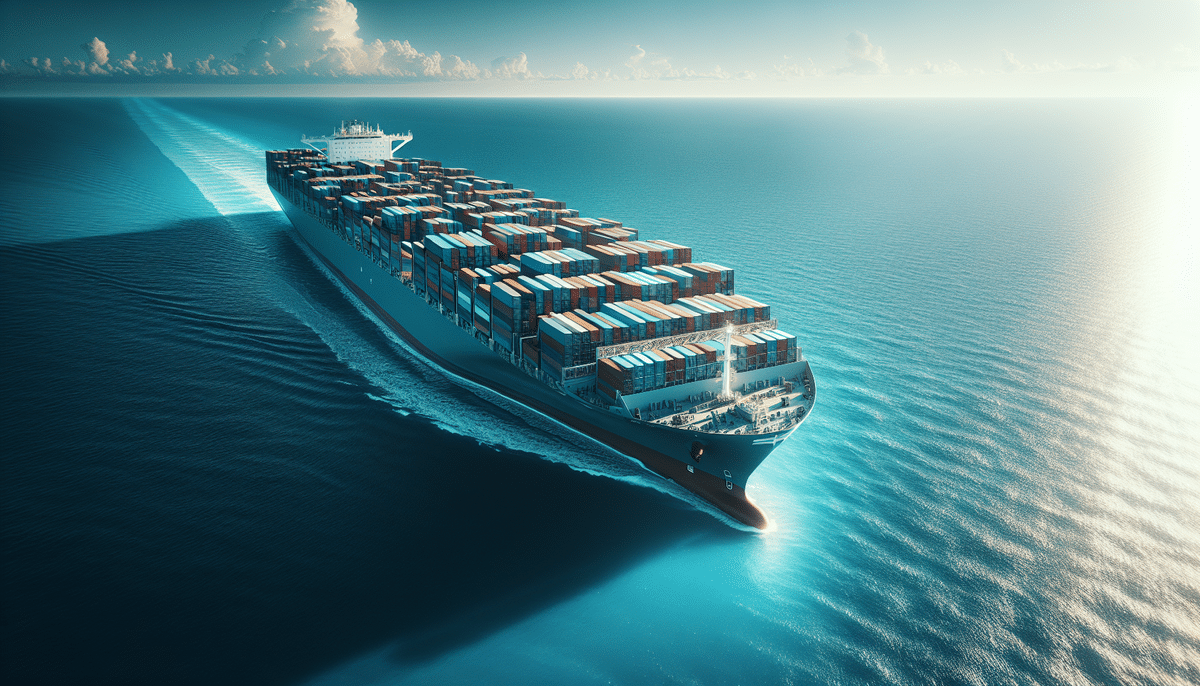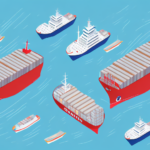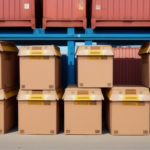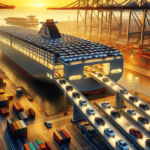Understanding the Benefits of Ocean Freight Shipping
In today's global market, the movement of goods is essential for businesses to operate efficiently. One of the most reliable ways to transport goods across countries and continents is through ocean freight shipping. Ocean freight shipping is a cost-effective and efficient method to transport large quantities of cargo. In this article, we will explore the various benefits of ocean freight shipping and understand how it can positively impact businesses.
The Cost Efficiency of Ocean Freight Shipping
One of the most significant advantages of ocean freight shipping is its cost-efficiency. Compared to air freight shipping, sea freight shipping is much cheaper, making it an ideal option for businesses dealing with large volumes of goods. According to the International Maritime Organization (IMO), sea freight accounts for approximately 90% of global trade by volume.
- Lower Shipping Costs: The cost of shipping a container via sea freight is significantly lower than air freight, allowing businesses to pass on savings to their customers.
- Economies of Scale: Ocean freight can handle large volumes of goods in a single shipment, reducing overall transportation costs.
- Flexible Shipping Options: Businesses can choose between Full Container Load (FCL) and Less Than Container Load (LCL) based on their specific needs, optimizing cost-effectiveness.
In addition to being cost-efficient, ocean freight shipping also has a lower carbon footprint compared to air freight shipping. Ships emit less carbon dioxide per unit of cargo transported than airplanes, aligning with the growing trend of environmental sustainability among businesses.
The Environmental Benefits of Ocean Freight Shipping
As businesses strive to reduce their environmental impact, ocean freight shipping stands out as a greener alternative. Ships can carry a massive amount of freight compared to planes, significantly reducing carbon emissions. The Global Maritime Forum reports that sea freight generates approximately 10 grams of CO2 per metric ton-kilometer, compared to 500 grams for air freight.
- Reduced Carbon Footprint: Lower emissions contribute to combating climate change.
- Less Traffic Congestion: By transporting goods via sea, road congestion and associated air pollution are minimized.
- Fuel Efficiency: Modern ships are designed to be more fuel-efficient, consuming less fuel and producing fewer emissions.
Overall, ocean freight shipping is a sustainable and eco-friendly option that businesses should consider when looking to transport their goods.
How Ocean Freight Shipping Can Reduce Delivery Times
Contrary to popular belief, ocean freight shipping can be more efficient than other modes of transportation. Advances in technology and improved ship design have enhanced the speed and reliability of ocean vessels. According to the World Shipping Council, modern container ships can travel at speeds of up to 25 knots, significantly reducing transit times.
- Efficient Vessel Operations: Enhanced navigation systems and optimized routes contribute to faster delivery.
- Large Volume Handling: The ability to carry large shipments reduces the need for multiple trips, speeding up the overall delivery process.
- Reliability: Ocean freight is less susceptible to delays caused by traffic or minor weather disruptions, ensuring more consistent delivery schedules.
Additionally, ocean freight shipping is more resilient to adverse weather conditions compared to air and land transportation, providing businesses with a reliable shipping alternative.
The Role of Technology in Ocean Freight Shipping
Technology has revolutionized ocean freight shipping, making it more efficient and transparent. Innovations such as real-time tracking, automation, and blockchain technology have streamlined operations and enhanced security.
- Real-Time Tracking: Businesses can monitor their shipments in real-time, allowing for better supply chain management and timely decision-making.
- Automation: Automated loading and unloading systems reduce manual labor, minimize errors, and increase operational efficiency.
- Blockchain Technology: Provides secure and transparent transaction records, reducing the risk of fraud and improving trust among stakeholders.
These technological advancements not only improve the efficiency of ocean freight shipping but also enhance the overall customer experience by providing greater visibility and reliability.
The Importance of Proper Packaging for Ocean Freight Shipping
Proper packaging is crucial in ocean freight shipping to protect goods from damage during transit. Effective packaging strategies minimize the risk of cargo loss and ensure that products arrive in pristine condition.
- Sturdy Materials: Using robust packaging materials like wooden crates or reinforced containers protects against rough handling and environmental factors.
- Cushioning: Materials such as bubble wrap and foam padding absorb shocks and vibrations, safeguarding fragile items.
- Sustainable Packaging: Utilizing biodegradable or recyclable materials reduces environmental impact and aligns with global sustainability goals.
Additionally, proper packaging helps businesses comply with international shipping regulations, avoiding delays and potential fines by meeting specific packing standards required by various countries.
The Risks and Challenges of Ocean Freight Shipping
Despite its numerous advantages, ocean freight shipping presents certain risks and challenges that businesses must navigate.
- Weather Conditions: Rough seas and storms can cause delays, impacting delivery schedules and supply chain reliability.
- Security Concerns: The risk of cargo theft and piracy remains a significant concern, necessitating enhanced security measures.
- Cargo Damage: Improper handling or packaging can lead to damaged goods, resulting in financial losses and reputational damage.
- Environmental Impact: Large cargo ships emit greenhouse gases, contributing to climate change, and incidents like oil spills can have devastating effects on marine ecosystems.
Addressing these challenges requires strategic planning, investment in security technologies, and adherence to best practices in packaging and logistics management.
The Role of Customs and Regulations in Ocean Freight Shipping
Compliance with customs regulations is essential for the smooth movement of goods across international borders. Each country has its own set of rules and documentation requirements that businesses must adhere to.
- Documentation: Accurate and complete paperwork, including bills of lading, invoices, and packing lists, is necessary to clear customs without delays.
- Regulatory Compliance: Understanding and adhering to local and international regulations prevents fines, shipment rejections, and legal issues.
- Tariffs and Duties: Proper classification and valuation of goods ensure correct tariff application and duty payments.
Partnering with knowledgeable freight forwarders and customs brokers can help businesses navigate the complexities of international shipping regulations, ensuring compliance and facilitating efficient customs clearance.
How to Choose the Right Ocean Freight Carrier
Selecting the appropriate ocean freight carrier is vital to ensure the safe and timely transport of goods. Several factors should be considered when making this decision:
- Cost: Compare shipping rates and understand the pricing structure to find a carrier that fits your budget.
- Transit Times: Evaluate the carrier's transit schedules to meet your delivery deadlines.
- Reliability: Research the carrier's reputation for punctuality and reliability through reviews and industry ratings.
- Service Offerings: Ensure the carrier provides services that match your specific shipping requirements, such as temperature-controlled or hazardous material shipping.
- Network Coverage: A carrier with a comprehensive global network can offer more routing options and better flexibility.
By carefully assessing these factors, businesses can choose a carrier that aligns with their logistical needs and ensures the efficient movement of their goods.
Tips for Tracking Your Shipment During Ocean Freight Shipping
Effective shipment tracking is crucial for managing supply chains and ensuring timely delivery. Here are some tips to enhance your tracking capabilities:
- Use Advanced Tracking Software: Implement tracking solutions that provide real-time updates on your shipment’s location and status.
- Leverage Online Portals: Utilize carrier-provided online portals to access detailed information about vessel movements, estimated arrival times, and shipment milestones.
- Set Up Notifications: Enable automated alerts for key events, such as departure, arrival, and any delays, to stay informed throughout the shipping process.
- Integrate Tracking with Supply Chain Management: Incorporate tracking data into your supply chain management systems to enhance visibility and decision-making.
Proper tracking allows businesses to mitigate risks, manage inventory effectively, and maintain transparency with customers regarding shipment status.
Understanding Incoterms in Ocean Freight Shipping
Incoterms are a set of standardized rules that define the responsibilities of buyers and sellers in international trade transactions. Understanding Incoterms is essential for businesses engaged in sea freight shipping as it helps mitigate risks and ensures smooth transactions.
- FOB (Free on Board): The seller is responsible for delivering the goods to the vessel, covering all costs up to that point.
- CFR (Cost and Freight): The seller covers the cost and freight necessary to bring the goods to the destination port, while the buyer assumes risk once the goods are on board the vessel.
- DDP (Delivered Duty Paid): The seller handles all responsibilities, including shipping, insurance, and customs duties, delivering the goods directly to the buyer's location.
Familiarity with Incoterms ensures that both parties clearly understand their obligations, reducing the potential for disputes and enhancing the efficiency of the shipping process.
How to Calculate the Cost of Your Ocean Freight Shipment
Calculating the cost of an ocean freight shipment involves several factors. Understanding these elements helps businesses estimate expenses accurately and optimize their shipping budgets.
- Container Size: The dimensions of the container (e.g., 20ft, 40ft) directly impact the shipping cost.
- Weight and Volume: Heavier or bulkier shipments may incur higher fees due to the increased space and weight.
- Destination: The distance between the origin and destination ports affects transportation costs, with longer routes typically costing more.
- Carrier Rates: Different carriers offer varying rates based on their service levels, routes, and market conditions.
- Additional Fees: Customs duties, insurance, port handling charges, and fuel surcharges can add to the overall cost.
To simplify the cost calculation process, many businesses utilize online freight calculators or collaborate with freight forwarders who can provide accurate estimates based on specific shipment details.
The Future of Ocean Freight Shipping: Trends and Predictions
The ocean freight shipping industry is evolving rapidly, driven by technological advancements and increasing emphasis on sustainability. Here are some key trends shaping the future of the industry:
- Automation and Digitalization: The adoption of automated systems and digital platforms enhances operational efficiency and reduces human error.
- Green Shipping Practices: There is a growing focus on using alternative fuels, such as LNG and hydrogen, to reduce carbon emissions and promote environmental sustainability.
- Blockchain Technology: Implementing blockchain enhances transparency and security in transactions, streamlining supply chain processes.
- Smart Shipping: The integration of IoT devices allows for real-time monitoring of vessel performance and cargo conditions.
- Expansion of Port Infrastructure: Investments in port infrastructure improve handling capacities and reduce turnaround times for ships.
These trends indicate a move towards more efficient, transparent, and environmentally responsible ocean freight shipping, presenting both opportunities and challenges for businesses and stakeholders in the industry.
Comparing Air and Sea Freight: Which is Right for You?
Choosing between air and sea freight depends on several factors, including budget, speed, and shipment size. Here's a comparison to help businesses make informed decisions:
- Speed: Air freight is significantly faster, with shipments typically arriving within days, making it suitable for time-sensitive goods.
- Cost: Sea freight is more cost-effective, especially for large and heavy shipments, as it offers lower per-unit transportation costs.
- Capacity: Ocean freight can handle much larger volumes of cargo, making it ideal for bulk shipments.
- Environmental Impact: Sea freight has a lower carbon footprint compared to air freight, aligning with sustainability goals.
- Reliability: While air freight is generally more predictable in terms of schedules, sea freight offers regular and consistent services with less susceptibility to minor delays.
By weighing the pros and cons of each shipping mode, businesses can select the option that best aligns with their logistical needs and financial considerations.
By understanding the benefits of ocean freight shipping, businesses can improve their logistics processes and enhance their supply chain operations. While there are challenges involved in sea freight shipping, the advantages of this mode of transportation are clear. By taking a strategic approach to sea freight shipping and working with reliable carriers and forwarders, businesses can take advantage of this cost-effective and efficient way to transport goods across the world.






















